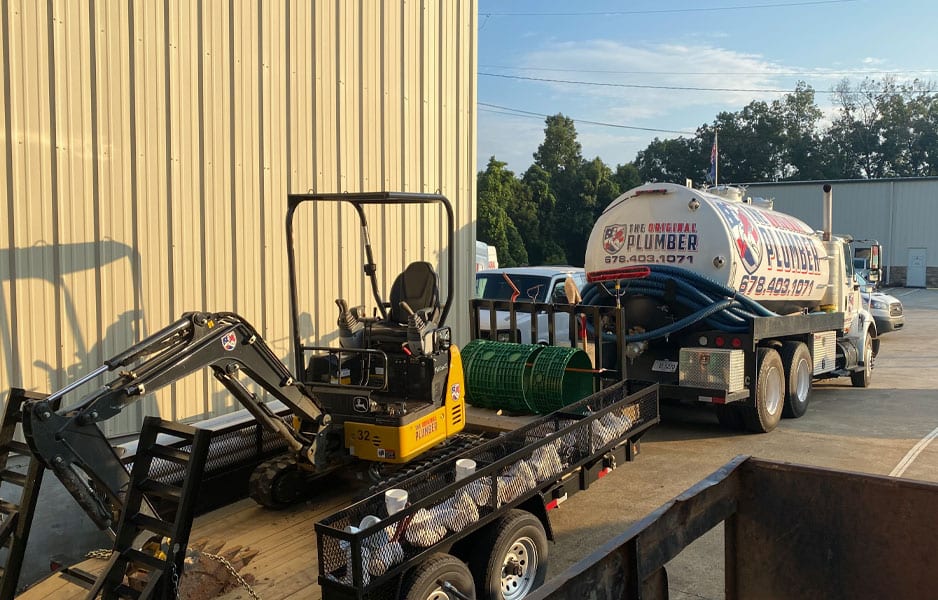Septic/Sewer Lift Station – What is it, and how does it work?
When the septic tank is situated below the drain field, the lift station normally transfers water from the tank to the field. If your house is located in rural areas, you usually get water from the well, and a septic tank caters to your waste management needs. If the septic tank is to be located below the drain field, a septic lift station should be put in place as per the topography. We will now look into how the lift station operates.
The Components of the Septic Lift Station
1. Transfer Pump
A submersible pump is present inside the tank helps to pump water out of the tank whenever the water level goes beyond a predetermined point. Inside the pump, a rotating impeller moves the water through a watertight system all the way to the distribution box. The size of the pump should align with the size of the pipe and the vertical pumping distance. Some of the components of the transfer pump include:
• Cover- a manhole usually covers the pump and gives direct access to it.
• Casing- the pump is present in a casing to ensure no solid matter flows in. In septic tanks that have an effective baffle system, the casing is not required.
• Alarm- if the water level rises to a level that activates the float, a second float will be triggered, and an alarm will be sounded to alert the occupants of the building that the pump is not working.
• Float- the pump comes ON after it has been triggered when the water level reaches a certain level. The float can be pressure-activated or mechanical.
Read more: Why septic alarm going off
2. Distribution Box
The distribution box is present at the top of the drain field. There is an inlet and outlet pipe from the tank to each part of the drain field. It is in the form of a rectangular concrete box that has a concrete cover. It is also buried the same as the septic tank.
3. Piping
The piping usually connects the distribution box and septic tank. The pipes are 3 to 4 inches thick, and it is made of PVC. Older systems may be made of clay or cast iron. The pipe is buried, and it can clog the same as the plumbing pipes in your premises. Improper tank maintenance and tree roots can cause clogs in the pipes.
The sewer lift station’s major components include a distribution box, a transfer pump, and pipes that usually connect them. There are ancillary components that usually ensure the pump is operating well and promptly.
Lift Station Maintenance
The septic tank should be well maintained, especially if a sewer lift station is involved. The pump is also breakable, and when it fails, you cannot use the system until it is repaired.
• The tank and the water pump should be inspected annually. The main focus should be on checking whether the sludge has occupied a certain percentage of the tank’s volume.
• If something can’t decompose, you should not flush it. In this case, the main focus is on tampons and diapers. Solid objects can also find their way into the tank, and they may break or clog it.
• The D-box should be checked regularly- the box should only contain water. The presence of solid matter and sludge means that pumping is required.
• Testing the alarm- hit the reset button periodically. The alarm is meant to safeguard you from the tank overflow in case it takes place. So, you should ensure the alarm is working well at all times. If there’s no test button, you can install one.
Specifications to Evaluate as you Choose a Sewer Lift Station
As a beginner, you should realize the size of the reservoir is measured in gallons. The number of pumps also determines the amount of energy required to run the entire station. The maximum flow rate is also measured in gallons per minute. The measurement of the outlet pipes also determines the discharge size.
Conclusion
The sewer lift station should be maintained appropriately to ensure it lasts long. Wet wells should also be cleaned to present waste buildup. The pumps should also be inspected regularly. Ensure the valves have also been greased. Floats must also be cleaned and inspected. A professional contractor can help with maintenance; however, you should carry out a background search to determine whether the contractor offers quality services.




